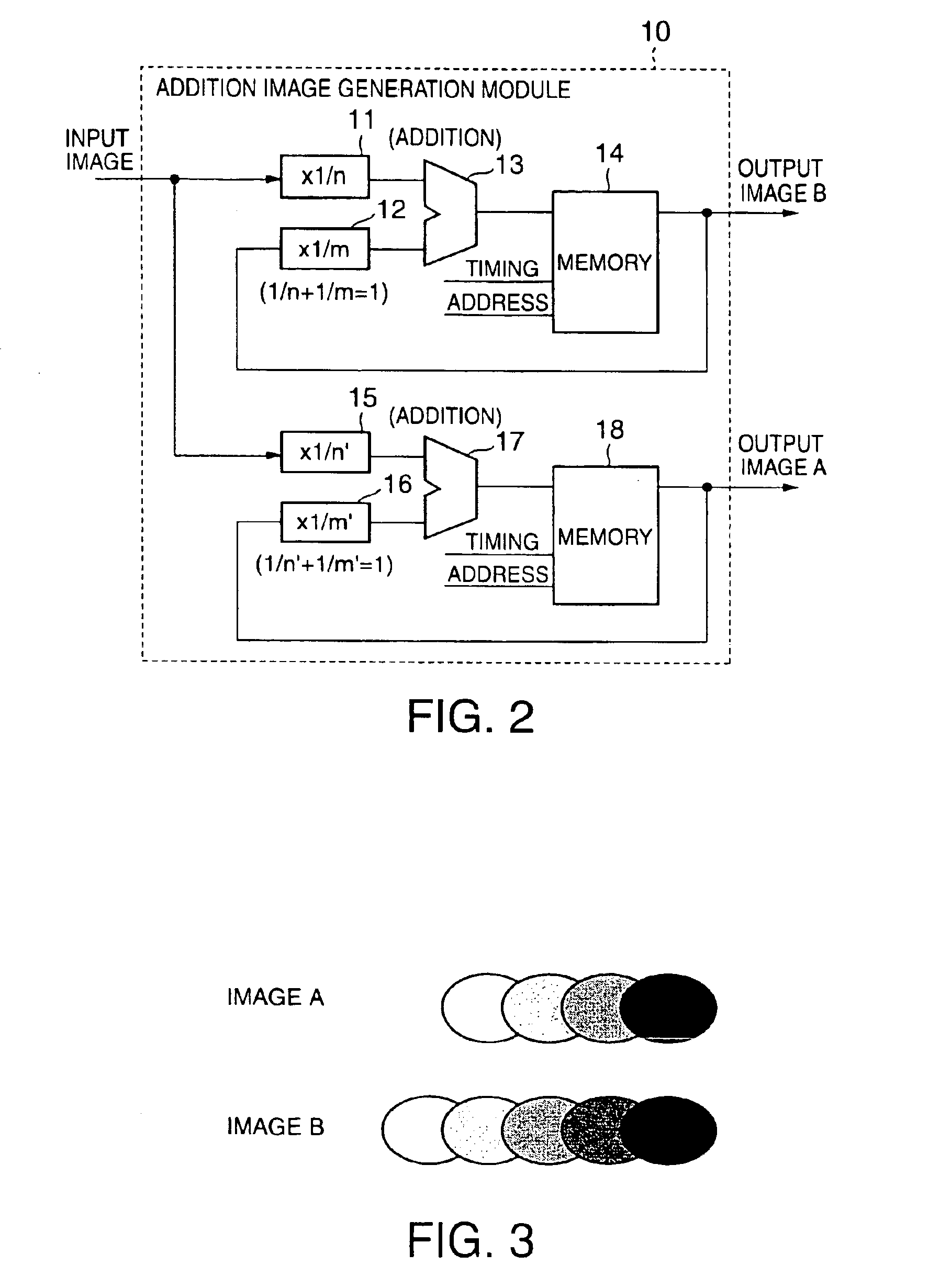Motion picture analyzing system
a motion picture and motion picture technology, applied in the field of motion picture analyzing systems, can solve the problems of difficult to analyze the motion of objects in motion pictures, difficult to realize high-speed analysis, and inability to meet the needs of users, etc., to achieve accurate analysis, simple configuration, and high speed
- Summary
- Abstract
- Description
- Claims
- Application Information
AI Technical Summary
Benefits of technology
Problems solved by technology
Method used
Image
Examples
Embodiment Construction
At first, the overall configuration of the motion picture analyzing system according to an embodiment of the present invention will be described, with reference to FIG. 1.
As shown in FIG. 1, the motion picture analyzing system 1 includes an addition image generation module 10, matrix development modules 21 and 22, a motion detection module 30, and a movement direction detection module 40.
Among the above modules, the addition image generation module 10 is for generating two kinds of addition images (image A and image B). The two kinds of addition images respectively includes images of still pictures at different discrete time points with the images being added at different ratios. The images (input images) of still pictures are sequentially timewise added at individual discrete time points included in the motion picture to be analyzed.
The matrix development modules 21 and 22 are for respectively taking out pixel groups (first pixel group a(i, j) and second pixel group b(i, j)) locate...
PUM
 Login to View More
Login to View More Abstract
Description
Claims
Application Information
 Login to View More
Login to View More - R&D
- Intellectual Property
- Life Sciences
- Materials
- Tech Scout
- Unparalleled Data Quality
- Higher Quality Content
- 60% Fewer Hallucinations
Browse by: Latest US Patents, China's latest patents, Technical Efficacy Thesaurus, Application Domain, Technology Topic, Popular Technical Reports.
© 2025 PatSnap. All rights reserved.Legal|Privacy policy|Modern Slavery Act Transparency Statement|Sitemap|About US| Contact US: help@patsnap.com



